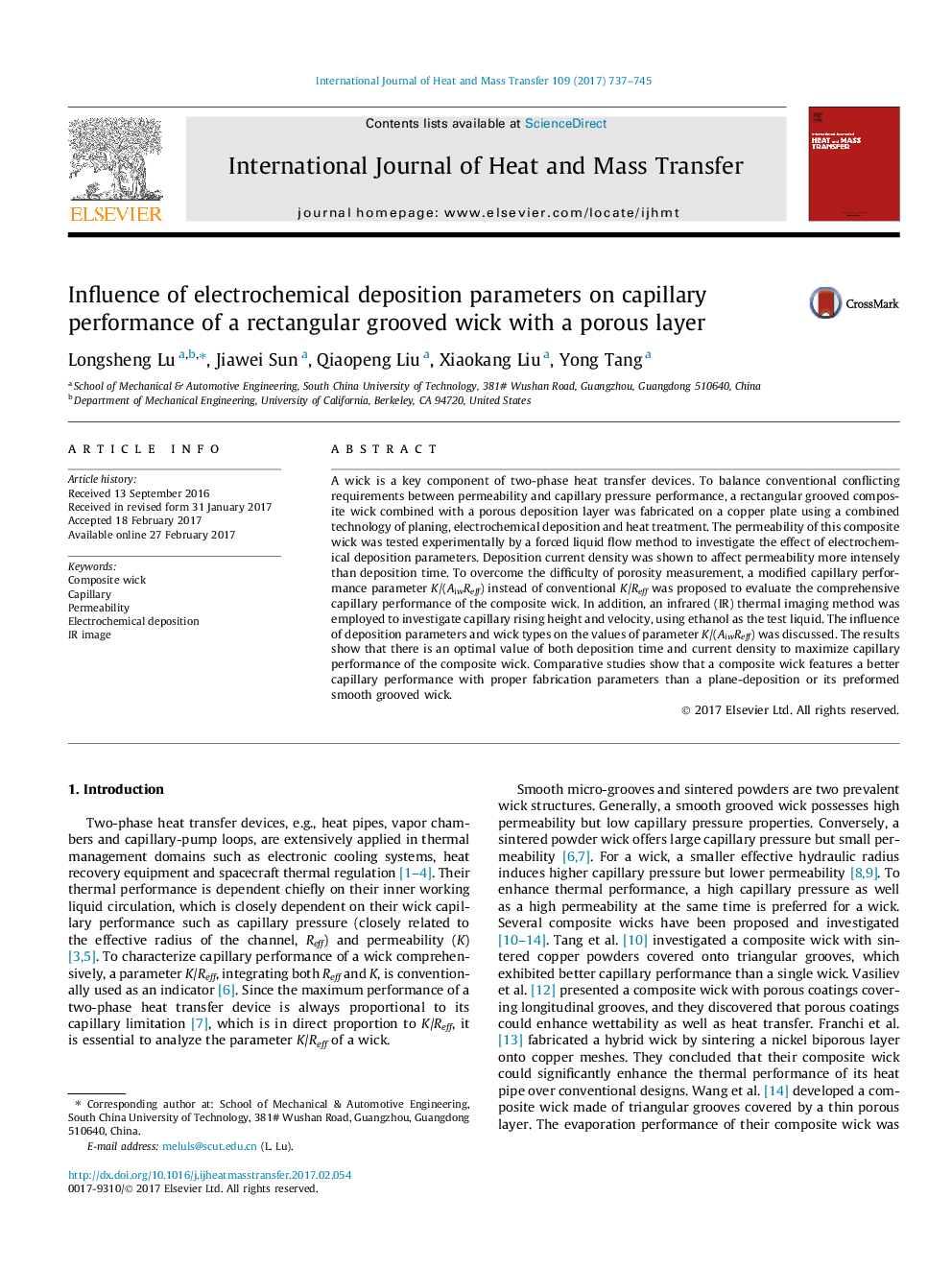| Article ID | Journal | Published Year | Pages | File Type |
|---|---|---|---|---|
| 4994524 | International Journal of Heat and Mass Transfer | 2017 | 9 Pages |
Abstract
A wick is a key component of two-phase heat transfer devices. To balance conventional conflicting requirements between permeability and capillary pressure performance, a rectangular grooved composite wick combined with a porous deposition layer was fabricated on a copper plate using a combined technology of planing, electrochemical deposition and heat treatment. The permeability of this composite wick was tested experimentally by a forced liquid flow method to investigate the effect of electrochemical deposition parameters. Deposition current density was shown to affect permeability more intensely than deposition time. To overcome the difficulty of porosity measurement, a modified capillary performance parameter K/(AiwReff) instead of conventional K/Reff was proposed to evaluate the comprehensive capillary performance of the composite wick. In addition, an infrared (IR) thermal imaging method was employed to investigate capillary rising height and velocity, using ethanol as the test liquid. The influence of deposition parameters and wick types on the values of parameter K/(AiwReff) was discussed. The results show that there is an optimal value of both deposition time and current density to maximize capillary performance of the composite wick. Comparative studies show that a composite wick features a better capillary performance with proper fabrication parameters than a plane-deposition or its preformed smooth grooved wick.
Related Topics
Physical Sciences and Engineering
Chemical Engineering
Fluid Flow and Transfer Processes
Authors
Longsheng Lu, Jiawei Sun, Qiaopeng Liu, Xiaokang Liu, Yong Tang,
